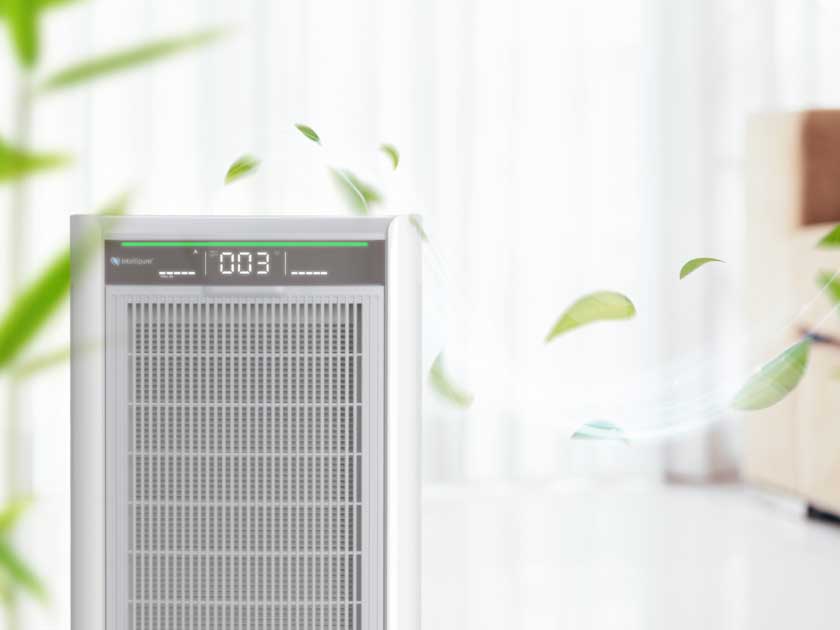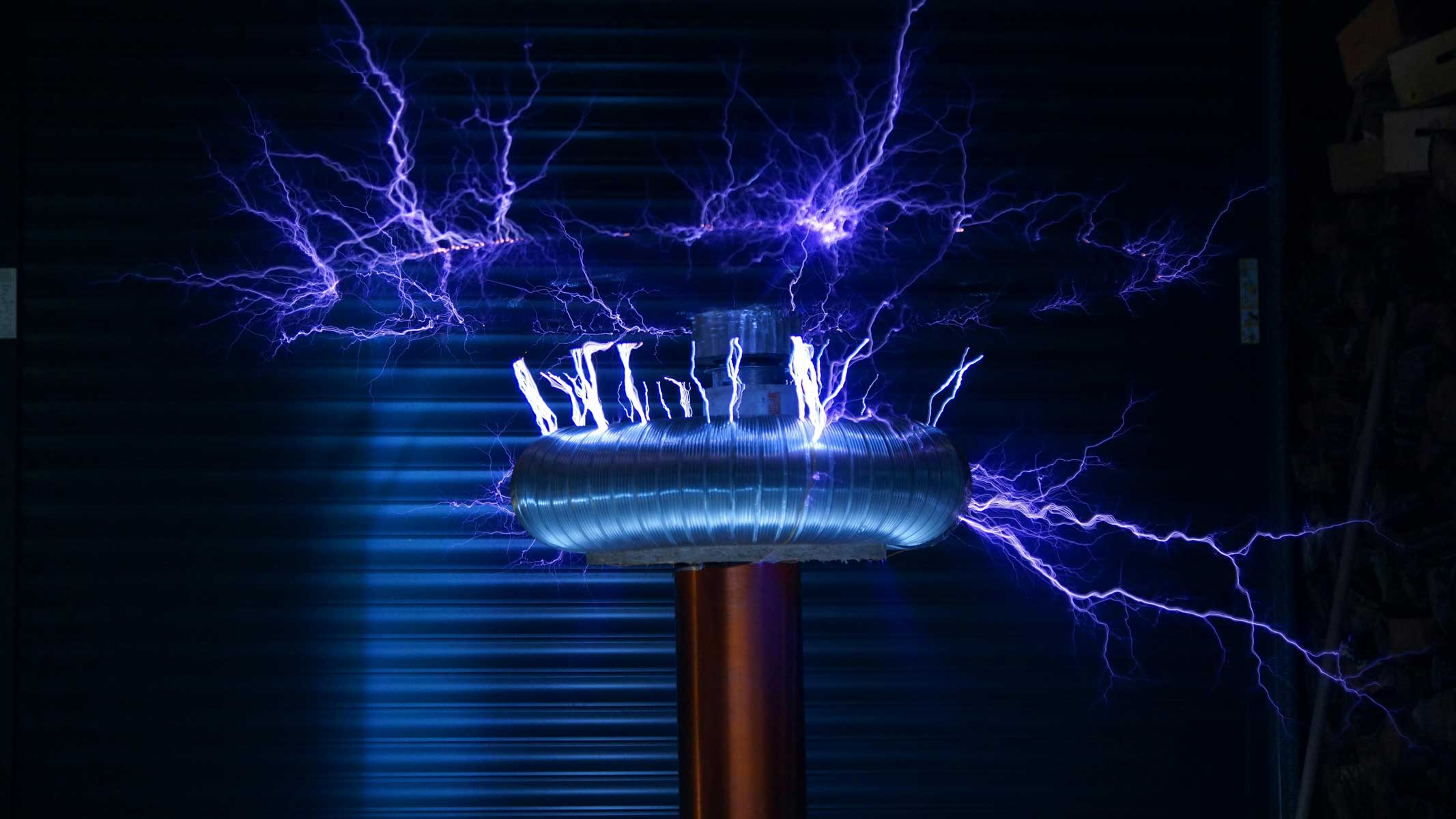
Summary
- Store-bought air fresheners often mask odors with chemicals like VOCs, which can worsen indoor air quality.
- DIY odor elimination uses science-backed methods like adsorption, absorption, and neutralization to remove odors at the source.
- Baking soda, white vinegar, and essential oils are powerful natural tools for neutralizing and refreshing indoor air.
- Quick fixes include ventilating, isolating odor sources, and using homemade sprays, powders, or sachets for lasting freshness.
- Air purifiers with HEPA and activated carbon filters complement DIY methods by continuously removing odor-causing particles and VOCs.
Are you still haunted by the smell of last week’s burned casserole? Or does the funk of last weekend’s softball post-game party still waft through the living room? Can you still smell wet dog even though that rainy walk was days ago? It can be frustrating trying to reclaim your home’s once fresh air with store bought products that continue to fail you. Sometimes the best solutions are the simple ones you can make at home. Here’s how to eliminate stubborn odors yourself with a few simple ingredients.
Understanding Odor Elimination vs Masking
When it comes to getting rid of nasty odors, you want them gone, not just covered up. There is an entire commercial industry built up around air fresheners that might actually make things worse. These air fresheners may contain a range of dangerous chemicals such as formaldehyde, benzene, toluene or volatile organic compounds (VOCs). Spraying a bunch of chemicals in the air may make things smell okay for a little while, but you need to stop the odor at the source for truly lasting smell relief. There are a number of ways to tame smells naturally using proven science such as adsorption, absorption, chemical neutralization, oxidation, and biological degradation.
- Adsorption - Odor molecules attach to the surface of another material.
- Absorption - Odor molecules are taken inside another material.
- Chemical neutralization - Odor molecules chemically react with other compounds.
- Oxidation - Another molecule alters or destroys the odor molecules.
- Biological degradation - Microbes or enzymes break down odor molecules.
Some odors are harder to get rid of than others such as pet odors or cigarette smoke. But you may be shocked at how well DIY methods work at removing them rather than just covering them up.
Most Powerful DIY Odor Eliminator Ingredients
When it comes to putting together your DIY odor elimination tool kit, there are a few powerful assets you need to know about.
Baking Soda: Uses Beyond Laundry
There was a time when you couldn’t open a refrigerator without finding a box of baking soda tucked in the back. People have known about its odor fighting powers for decades. Baking soda is mildly alkaline so when it contacts acidic odor molecules the result is a transformation into a neutral compound, a little bit of water and some carbon dioxide. Physically baking soda has a very high surface area ratio where it can adsorb odor molecules, trapping them.
As mentioned you can tuck a box of baking soda in the fridge or freezer to tame leftover smells. You can also sprinkle baking soda on carpets or rugs in problem areas and let it sit for an hour, then vacuum it up. Sprinkle baking soda in the bottom of your trash can, diaper pail, or litter box to fight smells at the source. You can also mix in a few drops of essential oil to make the area smell more pleasant while the baking soda works. Refresh or replace the baking soda once a month to keep the odor control working. You can even add baking soda to your laundry wash cycle to tackle smelly gym clothes. Sprinkle baking soda on drains, toilet rims or other smelly surfaces then spray it with vinegar to create a fizzy reaction. The chemical reaction helps dislodge gunk while deodorizing at the same time.
White Vinegar as a Natural Odor Fighter
Being acidic helps white vinegar react with odor causing molecules to change their structure to something less noxious. It can also dissolve grease and grime to help fight odor sources. White vinegar works best on hard surfaces like tile, vinyl flooring, laminate countertops, glass, and sinks. Don’t use it on wood or natural stone though.
If you want to use white vinegar without the vinegar smell, start by diluting it with water. In general mixing white vinegar with equal parts water is good for most cleaning purposes. For mopping floors (not wood) use ½ cup of white vinegar per gallon of warm water. You can also add a drop of essential oil (like lavender) to the vinegar/water solution to make cleaning a little more pleasant. Remember that white vinegar is an acid, so do not use it undiluted without researching how it might affect the surface you are cleaning. As mentioned above you can use white vinegar with baking soda for stubborn jobs.
Three Essential Ingredients That Make Your House Smell Good
By using baking soda, white vinegar and a few different essential oils you can fight bad smells around the house naturally. Baking soda traps the smells, white vinegar alters the odor molecules, and essential oils add a fresh smell. Not only are these ingredients easy to use, but they are also cheap and easy to find! The natural properties of these ingredients attack odors at the molecular level without needing harsh chemicals. Here are a few simple ways to use them together:
- Deodorizing powder - Add 20 drops of your favorite essential oil to ½ cup of baking soda. Mix thoroughly to blend.
- Spray cleaner - Add equal parts vinegar and water, then add 5 drops of essential oil per cup.
- Surface cleaner/deodorizer spray - Add one tablespoon of baking soda to one cup of water along with 20 drops of essential oil.
How to Deodorize Your House Quickly
Sometimes an odor emergency hits from out of the blue, so it is best to be prepared.
Emergency Odor Elimination Methods
The first thing to do is find the source of the bad smell and either get rid of it or clean it. If you don’t get rid of the source, trying to cover it up will just make things worse. Turn off the central HVAC system to prevent spreading the smell to other areas through the ducts. Close doors to rooms where the smell hasn’t spread yet. Open a few windows and circulate fresh air to dilute odors. A box fan placed in a window blowing outward will pull odors out of the area. If you have an air purifier with an activated charcoal filter now is a great time to deploy it. The Intellipure Compact features a 6-stage pre-filter that removes odors and locks them away.
Start by treating the odor source area. For carpets, rugs and fabrics, sprinkle a liberal amount of baking soda on the area and let it sit for at least an hour before vacuuming it up. For hard surfaces use a spray made from equal parts water and white vinegar. Spray the problem area and wipe with a microfiber cloth. Repeat until the smell dissipates.
Powerful Natural Odor Eliminator Recipes
Here are a few odor fighting recipes to try:
All-Purpose Odor Eliminator Spray
Grab an empty 16oz spray bottle and add one cup of distilled water, ½ cup white vinegar, two tablespoons of rubbing alcohol, and 10 drops of lemon essential oil. Put the top on the spray bottle and give it a good shake before each use.
Carpet & Upholstery Deodorizing Powder
Mix ½ cup of baking soda with 20 drops of lavender or eucalyptus essential oil. Sprinkle the mixture over carpet or upholstery and allow it to sit for an hour. Vacuum up the mixture thoroughly.
Refrigerator & Small Space Odor Absorber
Place at least ½ cup of baking soda in an open jar and put in the back of your refrigerator or any other small space. Change out the baking soda once a month.
Fabric Freshener
Inside an empty spray bottle dissolve one tablespoon of baking soda in one cup of distilled water along with five drops of lemon essential oil. Shake well and spray a light mist on fabric surfaces.
Room Freshening Sachets
In a small bowl mix one cup of baking soda with 20 drops of lavender or eucalyptus essential oil. Pour the mixture into a small, breathable fabric bag (a small clean sock works too) and toss the bag anywhere you need odor control. Great for cars or closets.
DIY Pet Odor Elimination Methods
Pets are wonderful to have around but their odors, not so much. Start by cleaning up any pet accidents taking care to wipe gently and blot liquids. On soft surfaces take care to not scrub which can push odors deeper. Enzyme-based cleaners are your best bet for accidents on carpets or furniture upholstery. You can make your own or pick up a bottle at the store. Lightly mist the carpet or upholstery with enzyme cleaner and let it dry. Sprinkle the area with baking soda and let it sit overnight then vacuum thoroughly. These cleaning solutions are usually pet-safe, but make sure to read the label of any products you buy from the store just to be sure.
Once you have pet odors under control you can help keep it away in the future. Bath or groom your pet regularly. Wash their bedding often and use washable covers on any furniture that they like so lounge on. Use an air purifier with an activated charcoal filter where your pet likes to spend their time.
Create Homemade Air Fresheners That Last
You may be surprised that you can make your own air freshener at home
Why Homemade Air Fresheners Are Worth Making
You don’t have to be a crafting wizard to make your home smell nice on your own. Commercial air fresheners often have synthetic fragrances that can contain harmful chemicals. Making your own is also more cost-effective as you may already have the ingredients on hand. By going the DIY route you can also customize the end product to your own personal scent preferences. There is also the environmental benefit of using natural ingredients rather than things cooked up in a lab. You decide what goes in and what is best for your family.
Simmered Mixes and Essential Oil Combinations
You can use essential oils to craft your own air freshener. The simplest method is to add 10-15 drops of essential oil to a small pot with two to three cups of water simmering on low heat. You can also use a slow cooker set on “low” to slowly heat the water and scent mixture for hours. You may also choose to use an essential oil diffuser, just make sure to use distilled water to prevent mineral buildup.
For making an air freshener spray, take an empty spray bottle and add 10-20 drops of essential oil to ¾ cup of distilled water along with two tablespoons of rubbing alcohol (to distribute the oil) then shake well. Store in a cool, dark place and it should keep for up to two weeks.
Try these seasonal essential oil scent combinations:
Spring
- Wild orange and peppermint
- Lavender, geranium and grapefruit
Fall
- Cardamom, cinnamon, clove and ginger
- CImmamon, clove and wild orange
Winter
- Cedarwood, frankincense and white fir
- Lavender and chamomile
You can use fewer drops of essential oil for a lighter fragrance. A word of caution for pet owners: talk to your veterinarian about pet-safe essential oils, as certain oils like tea tree or eucalyptus can be toxic to animals.
Where to Use Homemade Air Fresheners
Now that you have your homemade air freshener, here’s a few ideas for where to use it for the best odor fighting performance:
- Odor sources (trash can, litter box, clothes hamper)
- Near air vents for better scent distribution
- Areas with little air movement that may become stale
- Near toilets
- Hallways
- Linen closet (to keep away stale odors)
- Inside trash cans (under the trash bag)
How Long Natural Odor Absorbers Last
A natural odor absorber like baking soda can last roughly 30 days. Once smells start to creep back in, it is time to refresh or replace it. Stronger or more concentrated smells may require more frequent replacement. Moisture can also shorten the working life of baking soda. Luckily baking soda is plentiful and cheap, especially when purchased in bulk amounts over one pound. Far cheaper than little cans of store bought odor absorbers.
When to Add Air Purifiers to Your DIY Odor Elimination Plan
An air purifier is an excellent tool for helping keep your indoor air fresh and clean. The most popular air purifiers use HEPA filtration, which is especially helpful for capturing odor carrying particles like smoke soot. It is also common to have an activated charcoal filter which captures odor causing molecules. Air purifiers are great for continuous air cleaning that is quiet and effective. It is constantly cleaning the air and stopping odors from spreading. There are many types of air purifiers on the market (like air ionizers), but mechanical HEPA and activated charcoal filters actually remove the particles and odor molecules from the environment. A hybrid air purifier featuring both HEPA and activated charcoal filters is a powerful ally in fighting odor.
Avoiding Ionizers and Ozone-Generating Devices
When it comes to eliminating household odors, ionizing air purifiers aren’t really up to the task. Air ionizers cause airborne particles to clump together and fall out of the air onto the floor or other surfaces. The odor causing particles aren’t really gone and can be kicked up into the air again. Air ionizers can also generate ozone as a byproduct of operation. There are also ozone generators that claim to remove odors. Ozone is a recognized air pollutant which is harmful to humans and pets. It can trigger asthma attacks and cause breathing issues in some people. While technically ozone may destroy some odors, the concentrations required to do so far exceed the amount to be around safely. It’s best to invest in other methods that match your DIY approach such as mechanical filters.
Troubleshooting Common DIY Odor Elimination Issues
Sometimes odors can really dig in for the long haul. For stubborn odors you may need to try several rounds of cleaning with different methods. Wait for each cleaner to dry before applying a different method to prevent any unwanted chemical reactions. Try a good cleaning first, then apply an odor absorber to the odor source while also running an air purifier. For fabrics, carpet or upholstery it may be necessary to call in a professional, as odors can seep deep into the material where the source is hard to reach. Smells that won’t go away even after repeated cleaning may require professional remediation.
Taking Control of Your Home's Air Quality Naturally
By going after the source of the odor and not just covering it up you will have the most success. It is possible to have great indoor air quality using simple ingredients found around the home. Plus, you can save money by doing it yourself. Add an Intellipure air purifier into the mix and you have a recipe for a fresh, clean breathing space. So grab a box of baking soda and fight that funk!

 Air Purifier Placement: Floor vs. Table
Air Purifier Placement: Floor vs. Table
 Benefits To A Smart Home Connected Air Purifier
Benefits To A Smart Home Connected Air Purifier


_(1).jpeg)

